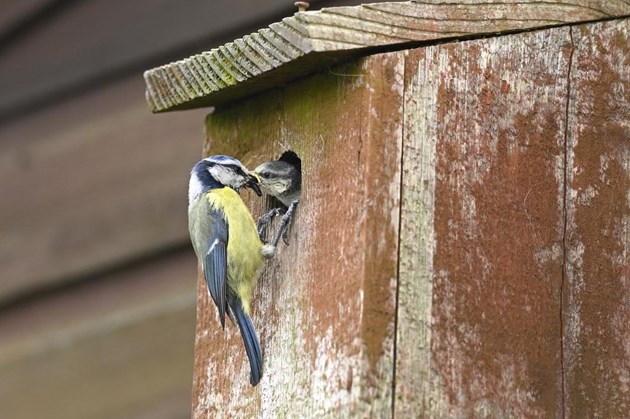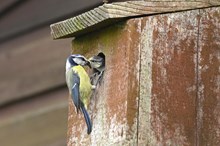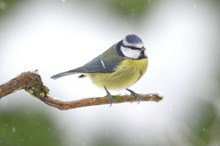07 December, 2022
Birds increase in urban areas

New research reveals an increase in the number of birds in Scotland’s towns and cities.
NatureScot’s latest report, which looked at 14 species of urban birds, shows a significant increase of 19% between 1994 and 2019.
A number of birds have seen an upsurge across all habitats, but there have been more rapid increases in urban areas. In particular, typical garden birds such as blue tits, great tits and goldfinches have seen rises in their numbers. Although increased use of birdfeeders are likely a key factor, these species showed even higher population increases on farmland, so other factors, such as climate change, are likely to have contributed as well. .
Woodpigeons saw the biggest increase: their numbers increased by 6% across the whole of Scotland, but swelled by 188% in urban areas. This increase could be due to fewer nest predators, such as carrion crows and magpies, and less competition from urban breeding collared doves, which have suffered a 46% drop. Milder winters are also helping this highly adaptable bird, so they can breed all year-round with our towns offering a safe haven.
Meanwhile, house sparrows, song thrushes and blackbirds all declined in urban areas – although they increased across other habitats. Possible reasons for their urban declines include poorer food quality for chicks and increases in disease and predation in towns and cities.
NatureScot’s Trends and Indicators Analyst, Simon Foster said: “We know that some bird species use more than one habitat and their habitat preferences evolve over time, based on a variety of factors from availability of food to climate change. Wood pigeons are a good case in point, responding to milder winters and the safety of towns to help them increase.
“We all need to play our part, putting nature at the heart of solutions to climate change and biodiversity loss, and there are lots of practical things people can do to help birds in their local areas. I’d suggest putting out bird feeders and keeping them regularly topped up and providing nest boxes. We’d also encourage people to plant hedgerows or let their existing hedges grow thickly to provide food and shelter for many bird species.
The report improves on past terrestrial breeding bird indicators by adding a new urban category and refining the farmland category to show arable, pastoral (grazing), wet and woody farmland trends. It also includes a general wetland bird indicator. These improvements will help measure progress towards climate change and biodiversity targets.
Simon added: “These new statistics will help us uncover an extra layer of data to improve our understanding of what is happening to bird populations in different types of habitats across Scotland, allowing us to take more targeted conservation action to help the most under-threat species.”
For farmland, a positive trend emerged across pastoral habitats, with a 31% increase in birds on grazing pastures, compared to declines in birds on arable and wet farmland. On wetlands, there was an overall 19% decline in water birds, particularly among waders such as common sandpiper, curlew, lapwing, oystercatcher and redshank.
Lapwing and curlew breed on wet grassland and upland habitats and are experiencing declines across all types of farmland, wetland and upland habitats in Scotland, and more widely in the UK. Habitat loss, land drainage and increases in predation are thought to be contributing to their declines. Species showing large population increases include sand martin, reed bunting and mute swan. Sand martins and reed buntings are showing greater increases in Scotland than in England, possibly due to climate change.
For more information, see the full indicator.
Contact information
- Name
- NatureScot Media
- Telephone
- 0131 316 2655
- media@nature.scot
NatureScot is Scotland's nature agency. We work to enhance our natural environment in Scotland and inspire everyone to care more about it. Our priority is a nature-rich future for Scotland and an effective response to the climate emergency. For more information, visit our website at www.nature.scot or follow us on X at https://x.com/NatureScot
’S e NatureScot buidheann nàdair na h-Alba. Bidh sinn a’ neartachadh àrainneachd na h-Alba agus a’ brosnachadh dhaoine gu barrachd suim a chur ann an nàdar. Tha e mar phrìomhachas againn gum bi nàdar na h-Alba beairteach agus gun dèilig sinn gu h-èifeachdach le èiginn na gnàth-shìde. Tha an tuilleadh fiosrachaidh aig www.nature.scot no air X aig https://x.com/NatureScot


